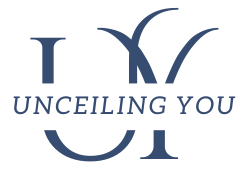In late July 2024, Vice President Kamala Harris garnered the backing of most Democratic delegates, positioning her as the party’s presidential nominee. While most celebrated, others called her the “Childless Cat Lady.” This derogatory label not only demeans her personal choices but also highlights a broader issue: the impact of gendered and demeaning language. Such language shapes our perception of female leaders and reinforces harmful stereotypes.
The Historical Context of Gendered Language
Gendered language is not a new phenomenon. Historically, women in leadership have faced derogatory remarks that aim to undermine their authority and capabilities. From labeling powerful women as “hysterical” or “emotional” to using terms like “childless cat lady,” these words carry significant weight and impact.
For instance, during Margaret Thatcher’s tenure as the UK Prime Minister, she was often described using gendered language that highlighted her femininity in a pejorative manner. Similarly, Hillary Clinton faced a barrage of sexist comments during her presidential campaigns, which focused on her appearance, voice, and personal life rather than her policies and qualifications.
The Impact on Women in Leadership
The use of gendered language perpetuates stereotypes that women are less capable or less serious than their male counterparts. It reinforces the notion that a woman’s worth is tied to her adherence to traditional gender roles, such as motherhood or marital status. This not only affects public perception but also impacts women’s self-perception and ambition.
While women receive labels like “hysterical” or “emotional,” I’ve seen men who pound angrily on the table or scream at the top of their lungs to the point that everyone in the building can hear them being excused because they are considered “passionate” or “assertive.” This double standard further highlights women’s challenges in being taken seriously as leaders.
Research shows that women who are subjected to gendered language and stereotypes in the workplace are less likely to pursue leadership roles. They may internalize these negative messages, leading to self-doubt and diminished capability. This creates a cycle where fewer women aspire to leadership positions and those who do face additional barriers. It’s a matter of women internally measuring the cost and benefits of moving into leadership roles. The cost of enduring name-calling outweighs the benefits of becoming the leader she dreams of being.
The Case of Vice President Harris
The recent comments about Vice President Harris being a “childless cat lady” are a stark reminder of women’s ongoing challenges in becoming the leaders they were meant to be. These remarks attempt to diminish her professional achievements and send a message to other ambitious women: your personal choices will be used against you.
Such language is particularly harmful because it trivializes Harris’s extensive career and contributions. Instead of focusing on her policies, leadership skills, and achievements, the conversation is diverted to her personal life. This shift in focus undermines her authority and distracts from the real issues.
Step Up to the Challenge
We must challenge and change the narrative surrounding women in leadership. Recognizing and calling out gendered language when we encounter it is crucial. Doing so can help create a more equitable and respectful environment for all leaders, regardless of gender.
We want to hear from you! How has gendered language affected your professional life or ambitions? Share your thoughts and stories in the comments below or send us a voicemail. We can shed light on these issues together and work towards a more inclusive future.





